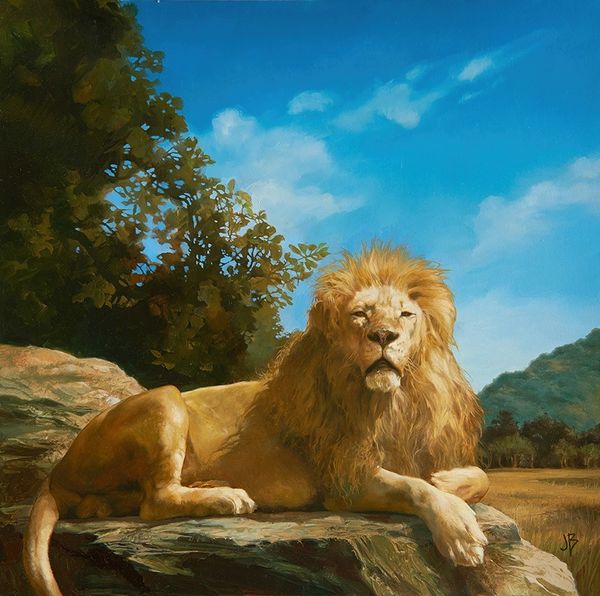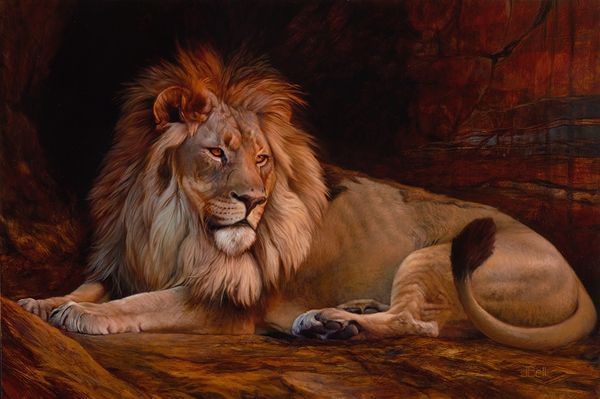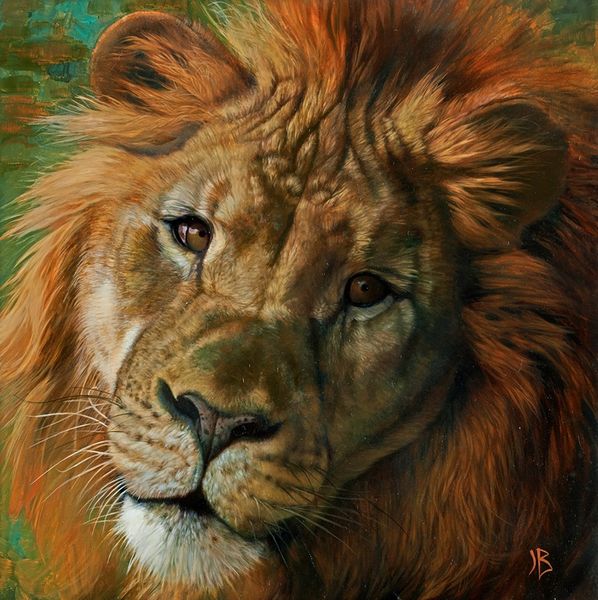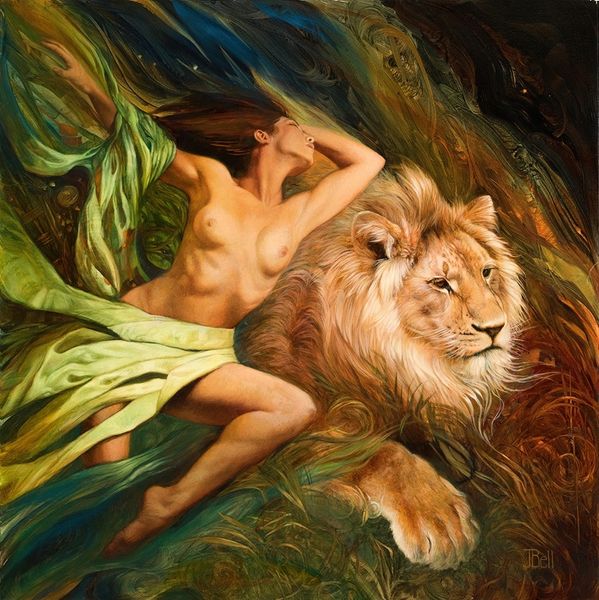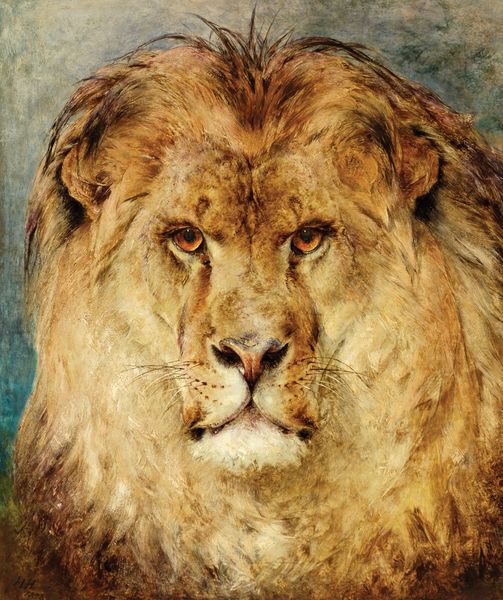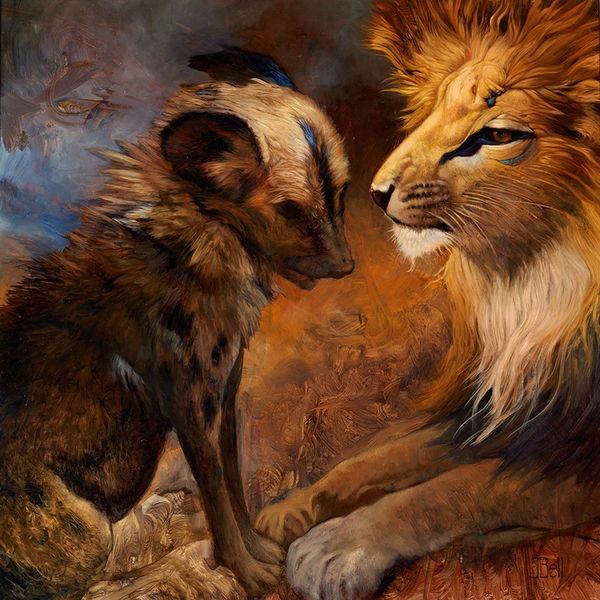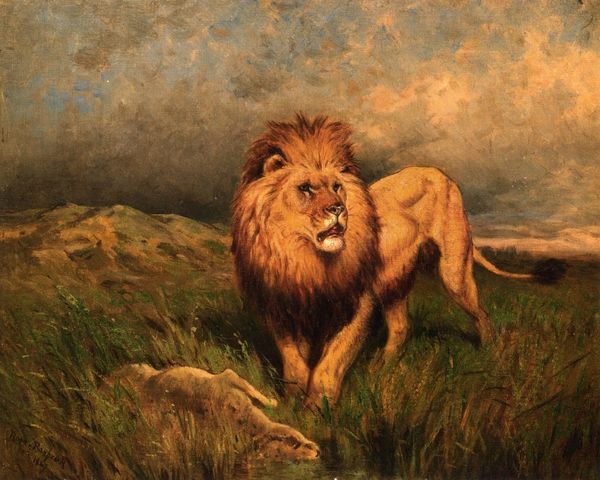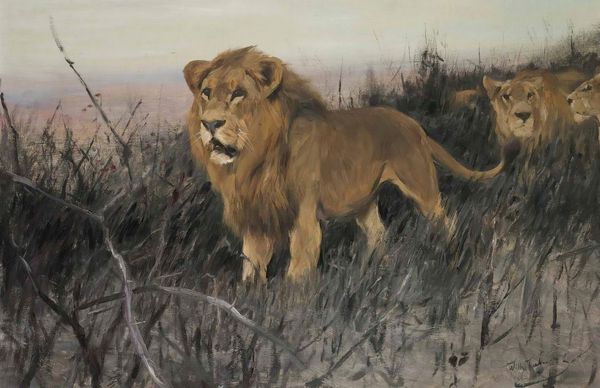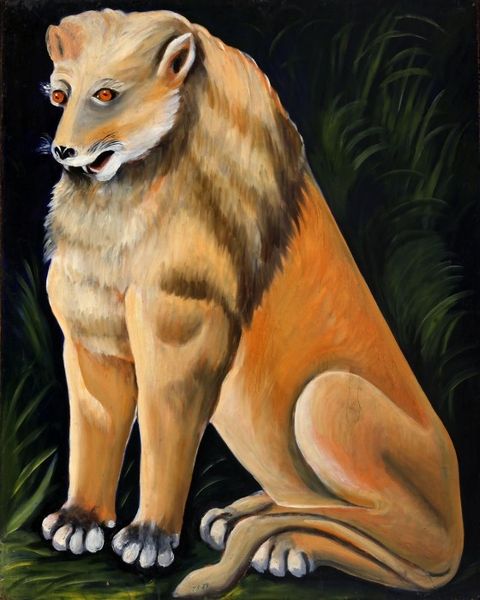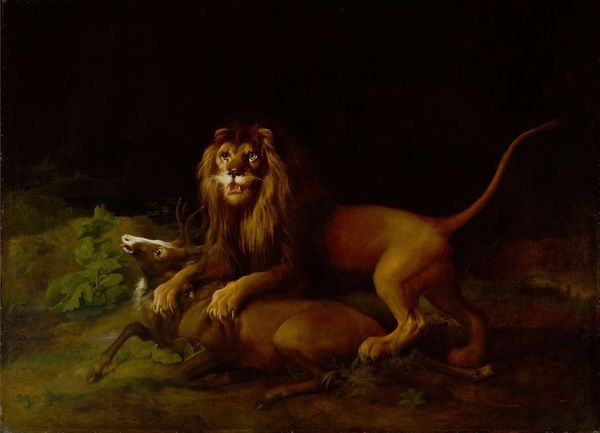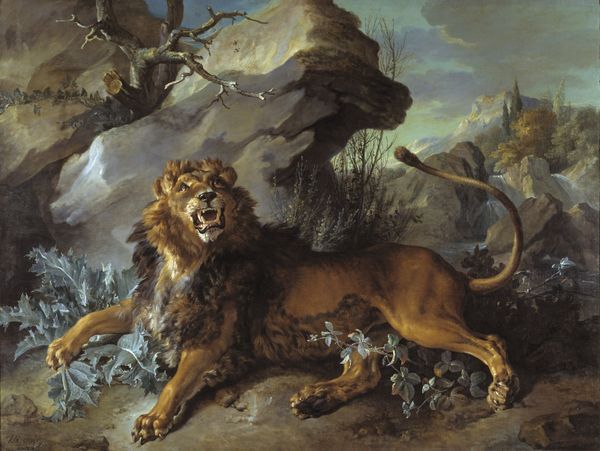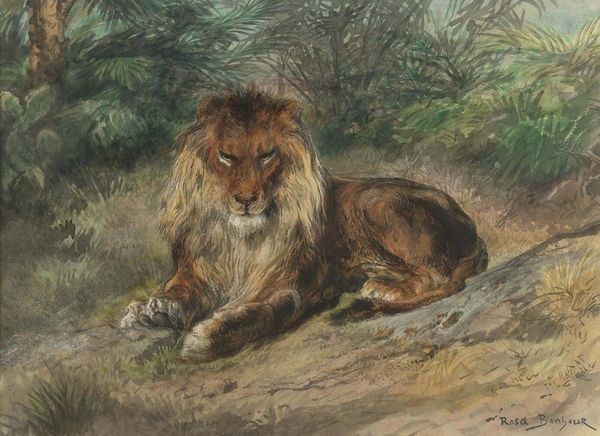
painting, oil-paint
#
abstract painting
#
painting
#
oil-paint
#
landscape
#
figuration
#
oil painting
#
animal portrait
#
surrealist
#
surrealism
#
portrait art
#
realism
Copyright: Modern Artists: Artvee
Curator: So, here we have Carlos Sablón’s “Le lion et le rat,” painted in 2021 using oil paints. It's quite a striking scene. Editor: Yes, it's hard to miss! The contrast between the massive, regal lion and the tiny mouse really grabs your attention. The oil paint gives it such a classical feel, yet there’s something unsettling about it. What strikes you most about the painting? Curator: What I find interesting is how Sablón is utilizing these traditional materials – oil paint, canvas – to depict this somewhat surreal scene. Oil paint, for centuries associated with portraying wealth and power, is used here to depict a lion, already a symbol of power, but posed rather passively. The artist's choice of these specific materials speaks to a commentary on the value of labor and the historical context that these characters find themselves in, no? Editor: That’s a fascinating way to look at it! So you are focusing on the raw materials and connecting that to power, but could it be the subject that defines it or the tools employed that create the visual output? How might we relate it to craftsmanship or the broader structures of economic output? Curator: Consider the making itself. The smooth blend of the oil paint to mimic texture—the lion's mane, the drape's fabric—that’s a trained hand performing skilled labor. That is a deliberate and skillful act, right? Yet, if it does not engage with or challenges that inherited framework of artmaking as related to labour, what is the value beyond technical virtuosity? What meaning emerges from this technical performance that you see? The choice to portray a vulnerable-looking lion versus the classic imagery affects it too, you see? It shifts the perspective we hold towards these dominant narratives. Editor: I see what you mean. It is the traditional materials against the narrative the image brings. By using them in the making of this rather unconventional and provocative composition that we, perhaps, expect, we start to reflect deeper on both process and reception. Thank you, it's really changed how I look at the painting now.
Comments
No comments
Be the first to comment and join the conversation on the ultimate creative platform.
